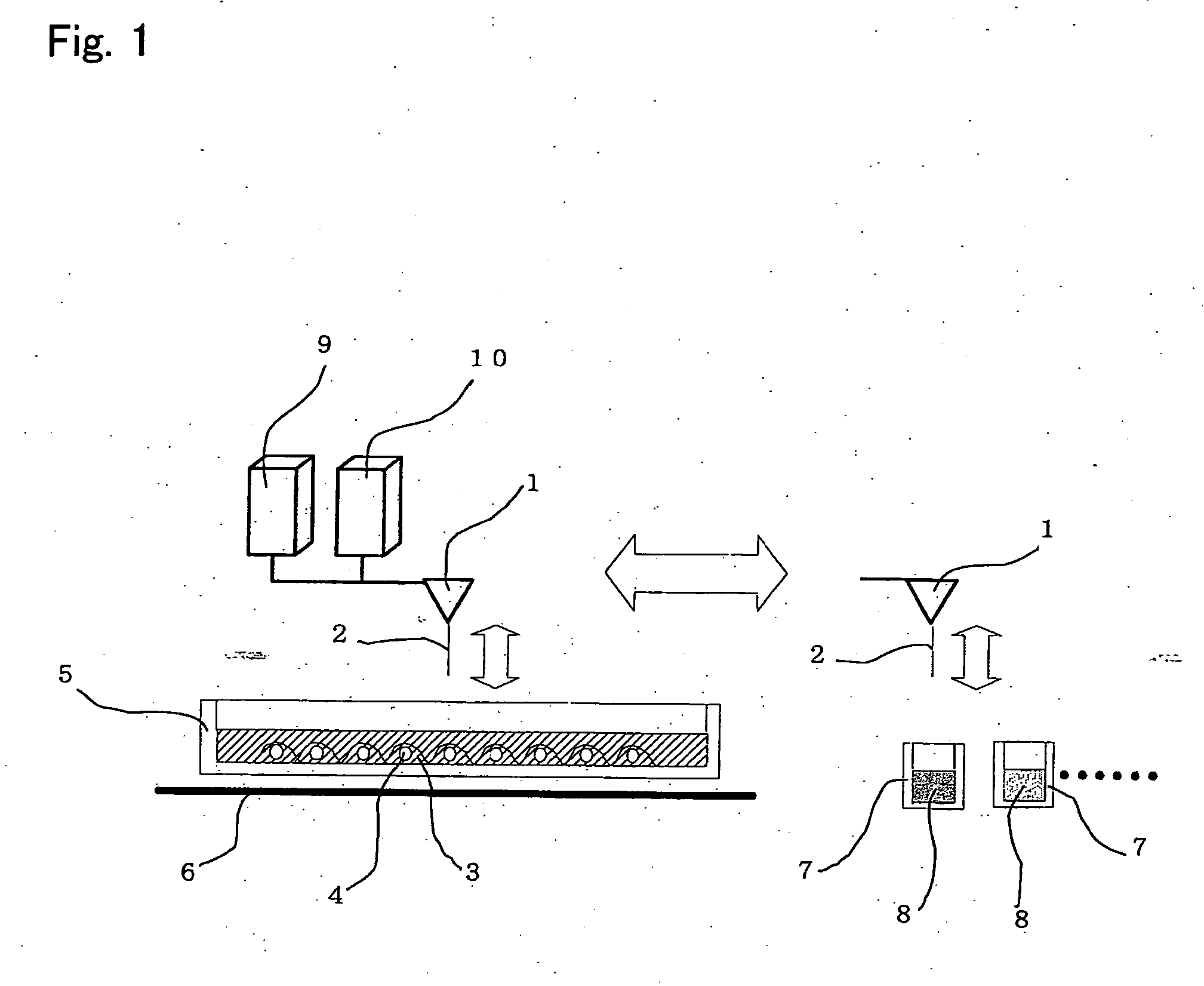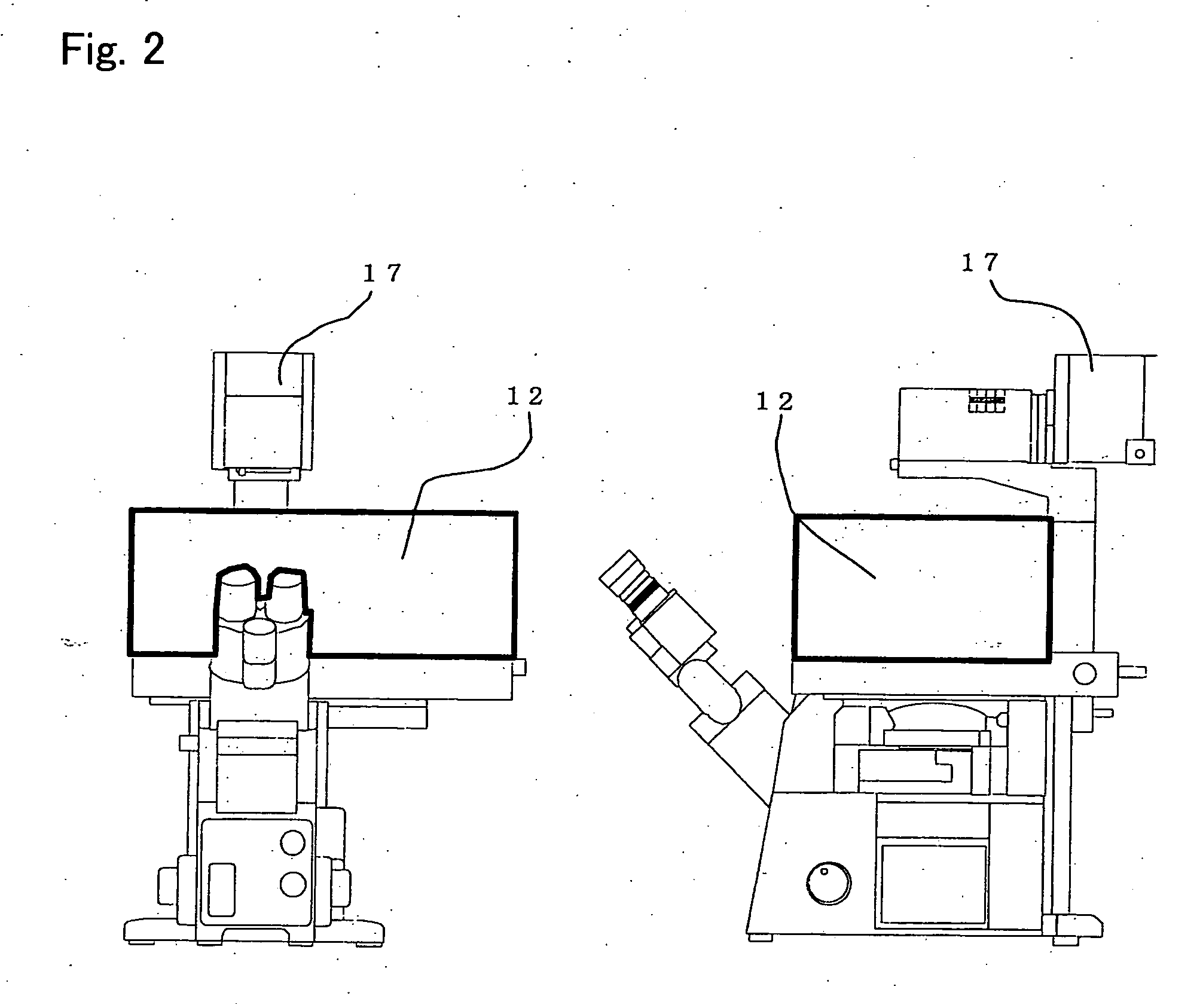Microinjection method and device
a micro-injection and device technology, applied in the field of micro-injection devices, can solve the problems of difficult injection of a substance into a specific cell, certain limit regarding the reduction of external diameter, and complex operation, and achieve the effect of reducing the invasiveness of the cell
- Summary
- Abstract
- Description
- Claims
- Application Information
AI Technical Summary
Benefits of technology
Problems solved by technology
Method used
Image
Examples
example 1
[0099] Using the device shown in FIG. 1, DNA was introduced into nerve cells that were cultured in a petri dish for culture.
[0100] As nerve cells, PC12. cells (nervous system clone cells isolated from rat adrenal medulla pheochromocytoma) were used. As a medium, DMEM (Dulbecco's Modified Eagle Medium) containing 10% fetal bovine serum (FBS) was used. The culturing was carried out at 37° C. in 5% CO2. As DNA, a recombinant expression vector containing NGF receptor gene was used, and 1 μg / ml DNA solution was used.
[0101] The needle used for the device shown in FIG. 1 composed of the carbon nanotube shown in FIG. 11, which had a diameter of 50 nm and a length of 3 μm.
[0102] First, the needle was immersed in the DNA solution, so as to allow DNA to attach to the surface thereof. Thereafter, the needle was inserted into the nucleus of a nerve cell, and then released the DNA therein. After completion of the introduction of the DNA, the nerve cell was continuously cultured. Even 3 days la...
PUM
| Property | Measurement | Unit |
|---|---|---|
| Length | aaaaa | aaaaa |
| Diameter | aaaaa | aaaaa |
| Diameter | aaaaa | aaaaa |
Abstract
Description
Claims
Application Information
 Login to View More
Login to View More - R&D
- Intellectual Property
- Life Sciences
- Materials
- Tech Scout
- Unparalleled Data Quality
- Higher Quality Content
- 60% Fewer Hallucinations
Browse by: Latest US Patents, China's latest patents, Technical Efficacy Thesaurus, Application Domain, Technology Topic, Popular Technical Reports.
© 2025 PatSnap. All rights reserved.Legal|Privacy policy|Modern Slavery Act Transparency Statement|Sitemap|About US| Contact US: help@patsnap.com



